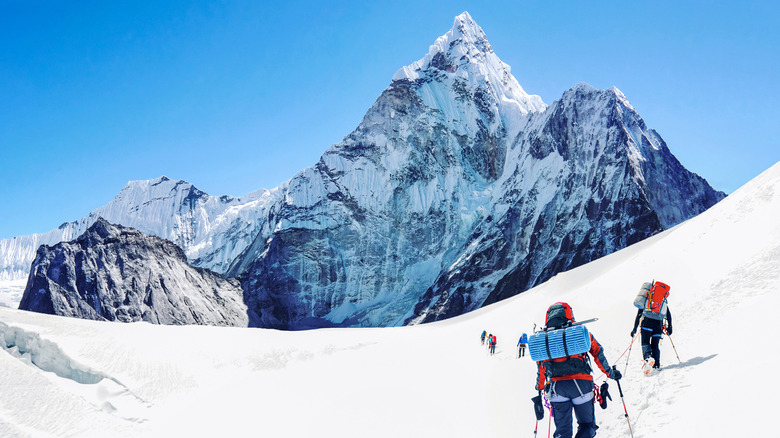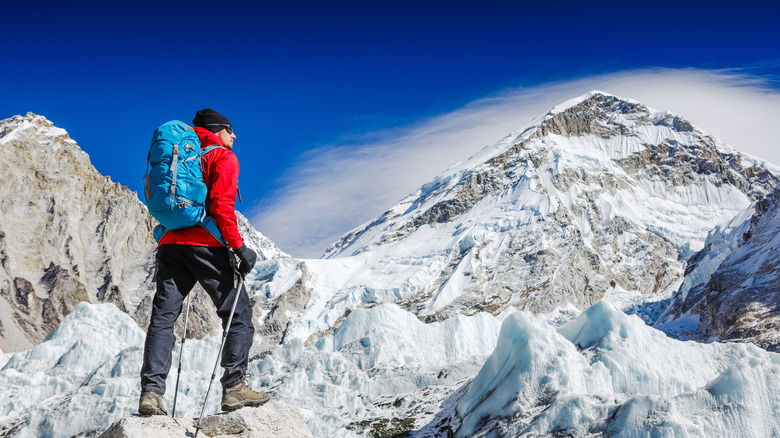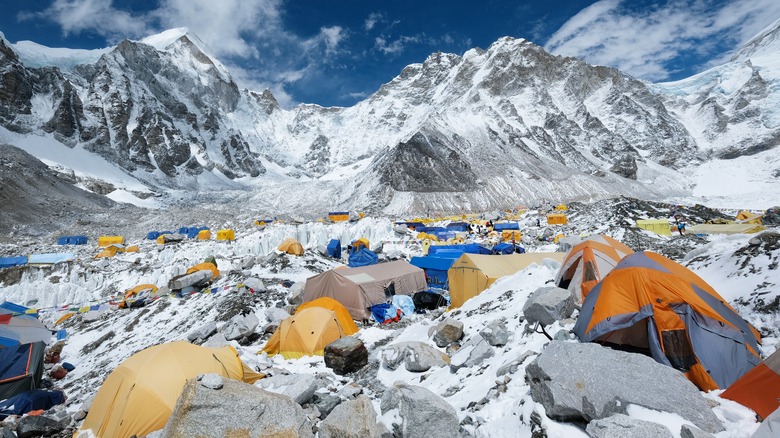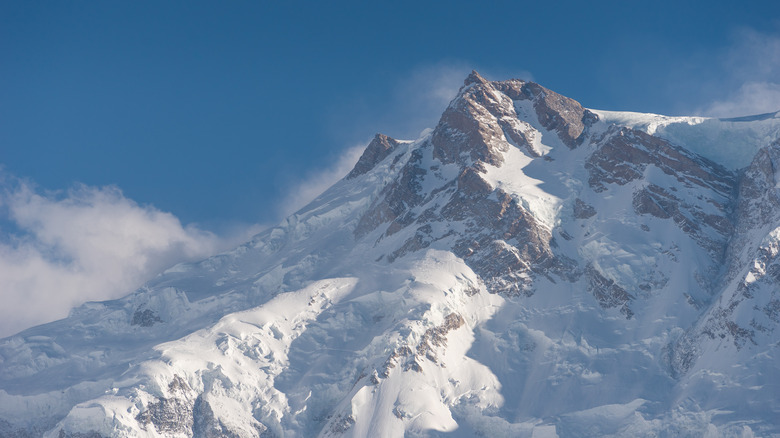Everest Wasn't Always The Tallest Mountain, And It Won't Be Forever
The mighty Mount Everest is often regarded as the tallest mountain in the world. The fact is, though, its true measurement has proven difficult to pin down. As Britannica reports, complicating factors such as methods used and the changing situation at the summit (the ice and snow making it difficult to determine where the mountain "ends") has led to figures being revised many times over. Questions remain as to how long Everest will continue to be regarded as the tallest mountain, and how long this has been the case.
Britannica goes on to state that a height of 29,028 feet was recorded during a Survey of India that concluded in 1954. In the decades that followed, technological advancements offered cutting-edge equipment that was used in subsequent measurements. December 2020, according to the outlet, marked the new "official" height of the mountain, as determined by surveys performed over a period from 2019: 29,031.69 feet.
According to Guinness World Records, the tallest mountain on the planet is Hawaii's Mauna Kea, which is a dizzying 33,480 feet in height. Why, then, doesn't this magnificent mountain claim the prize? Everest has an unfair advantage: Mauna Kea begins underwater in the Hawaiian Trough, and much of it is submerged. The National Ocean Service clarifies that Everest's peak is the highest point on Earth above sea level, making it the tallest mountain on a the technicality.
A mountainous history to traverse
There's a further wrinkle to the tale, though: Everest hasn't always been the tallest. On October 6, 1856, "Allen's Indian Mail and Register of Intelligence for British and Foreign India, China, and All Parts of the East" (via Google Books) declared "the newly-discovered mountain which Colonel Waugh proposes to call Mount Everest, in honour of the late surveyor-general of India" to be the tallest mountain.
The report stated, "the far-famed Dewalagiri had already for some years yielded its claim for pre-eminence to Kanchingunga ... and the latter must now yield." At the time, Everest was reported to be almost 850 feet higher than Kanchingunga, and exceeded Dewalagiri by some 2,176 feet.
Dhaulagiri I, per Britannica, is also found in the Himalayas, and the peak is now considered Earth's seventh-highest. Kanchenjunga, meanwhile, comes in at number three, at 28,169 feet, per Britannica. In turn, it seems, Everest will eventually yield too.
How is Mount Everest growing?
Again, there are technicalities involved in both becoming the tallest mountain, and in keeping the title. Just ask Mauna Kea, which must be more than a little irritated by smug old Everest. So might Ecuador's Mount Chimborazo. The National Ocean Service states that, if measuring from the very center of the planet, the Ecuadorian mountain tops it.
Everest is technically around 8,464 feet taller, but Chimborazo's position in the Andes, on the equator, makes it further from the center due to the non-spherical nature of the planet. This irregularity in Earth's shape is known as the centrifugal bulge, the outlet goes on.
As the BBC reports, Everest, and the Himalayas at large, continue to grow taller. This is due to the action of the continental plates against each other. "There are fossilized sea shells and marine deposits within the rocks of Mount Everest, where once the plate was at sea level, before slowly being forced upwards. Mount Everest continues to grow higher at the rate of 4mm per year as the plates continue to move," reports a Royal Geographical Society factsheet for teachers.
Nanga Parbat may grow taller than Mount Everest eventually
There's the rub, then: If another mountain "grows" at a faster rate than Everest, the current champion could lose its world's tallest title. This seems to be exactly what's happening, too. Per Guinness World Records, Earth's fastest-rising mountain is Pakistan's Nanga Parbat, in the Himalayan Plateau. In January 2005, the outlet reported that the movement of the plates was causing it to grow around 7 milimeters taller every year.
According to Britannica, Nanga Parbat is 26,660 feet tall. The growth may be relatively minuscule (when you're dealing with mountains on this incredible scale, three milimeters would scarcely register), but it's almost twice the rate of Everest's own. At the current rate, Be Smart on YouTube estimates, it could be a mere 241,000 years before Everest is forced into second place.
In the shadow of the legendary Mount Everest, Nanga Parbat sometimes isn't given the respect and reverence it deserves. Perhaps, very, very, very slowly indeed, this will change.



